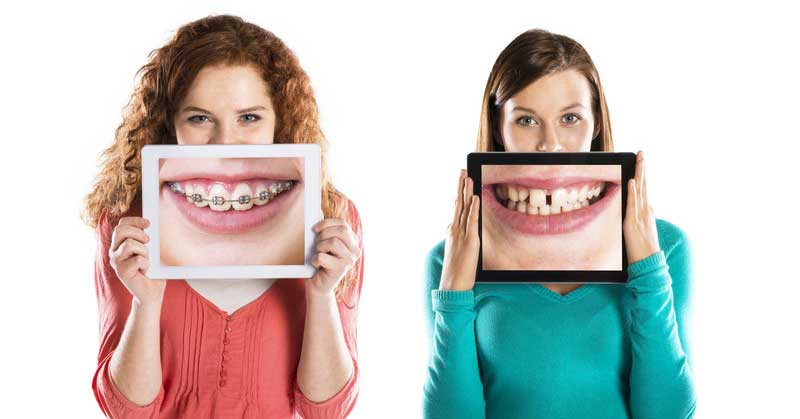Reports show that an increasing number of people are choosing to have their teeth straightened. There’s a reason for that: thanks to advanced dental technology, there are so many more options for straightening your teeth than there used to be. We’ve collected information about some of these treatments.
- Traditional metal braces: Even though a variety of other options exist, many people still choose standard metal braces to straighten their teeth. This tried-and-true method is not only very effective, but it’s also usually somewhat less expensive than other alternatives. There are a few downsides to metal braces. Some patients experience a certain amount of discomfort in the cheeks and gums with traditional braces. It’s also harder to thoroughly clean your teeth, and there are certain foods that you should avoid while wearing them.
- Ceramic straighteners: This recent update to traditional braces features ceramic brackets that are affixed to the patient’s teeth, making them somewhat less obvious than old-style metal braces. The downside to this option is that ceramic braces are not as durable as metal, and they are usually a little more costly than traditional braces.
- Invisalign®: Invisalign® aligners are molded plastic trays that fit snugly over the patient’s top and bottom teeth. A new set of trays is provided every two weeks or so, as the patient’s teeth slowly move into their straighter positions. Invisalign® is considered by patients to be much more comfortable than metal or ceramic braces. Since you can remove the aligners when you eat and clean your teeth, there are no issues with regard to restricted diets or oral hygiene routines. Taking all this into consideration, it’s easy to understand why Invisalign® has become such a popular choice for teeth straightening. The one disadvantage is that they are more expensive than many other options.
- Lingual straighteners: Another method that some patients choose are lingual straighteners. These devices are much like metal braces, except that the brackets are placed on the backside of the patient’s teeth, making them much less noticeable than traditional braces. Although they’re effective at straightening teeth, they present some of the same difficulties as traditional braces in that many patients find them uncomfortable to wear, and they make it difficult to brush and floss your teeth. They also impact how a person speaks because of their position inside the mouth.
Advancements in modern dental technology have given patients many more options when it comes to straightening teeth. The best way to decide which is right for you is to talk to your dentist. He or she can help you choose the best method taking into consideration your dental history and daily habits.



5 Comments
Your point of view caught my eye and was very interesting. Thanks. I have a question for you.
Your point of view caught my eye and was very interesting. Thanks. I have a question for you. https://www.binance.com/ar-BH/register?ref=V2H9AFPY
Thanks for sharing. I read many of your blog posts, cool, your blog is very good.
Thank you for your sharing. I am worried that I lack creative ideas. It is your article that makes me full of hope. Thank you. But, I have a question, can you help me?
Thanks for sharing. I read many of your blog posts, cool, your blog is very good.